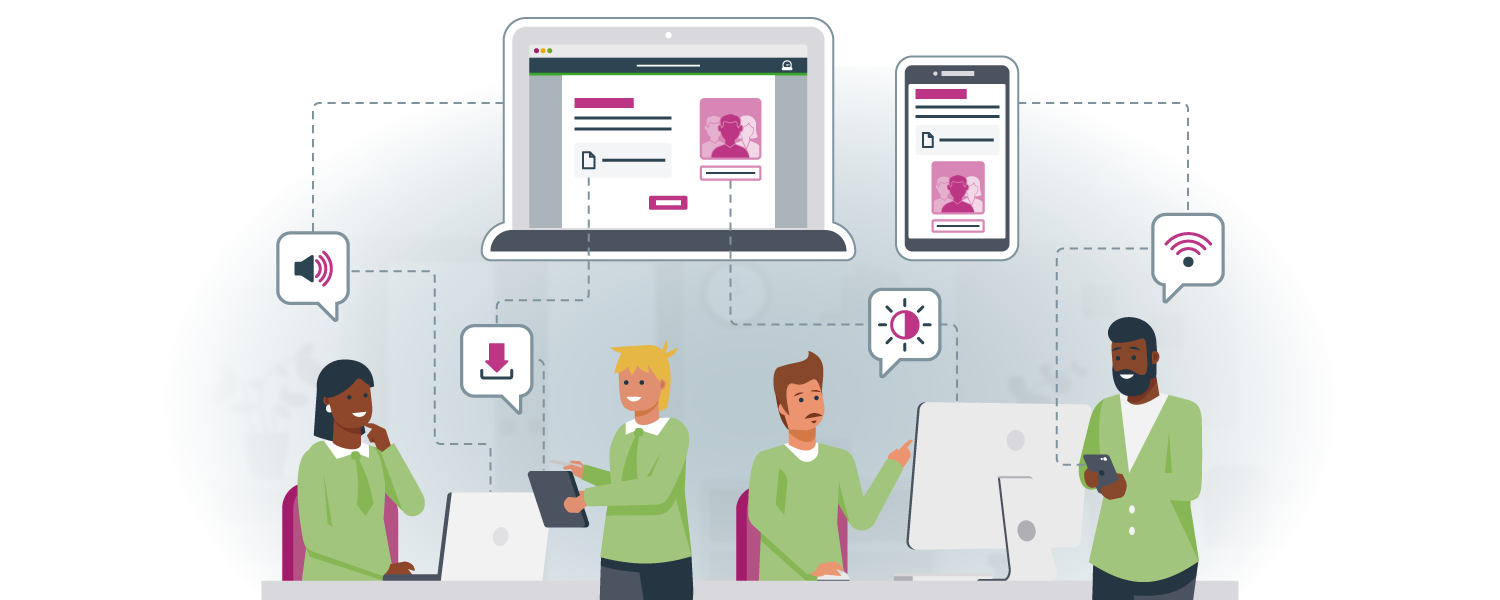Online learning is an excellent way to provide education and development opportunities to an ever-expanding and increasingly diverse group of people. With this diversity comes significant advantages, including breadth of knowledge and perspective, the ability to expand your audience, and the opportunity for further profits. It also means that now more than ever, you need to know how to design and create inclusive learning experiences.
Inclusive learning design involves creating programs that are accessible and meet the various needs of different individuals and organisations. Overall, inclusive learning aims to create an equal and inclusive experience for people of all abilities. You can achieve this experience by designing with people of different backgrounds and circumstances in mind. It is vital that we, as learning designers, take steps to be as inclusive as possible- particularly as inclusivity in learning design can have larger, ripple effects on other areas of work and society.
In this article, we will discuss strategies for creating inclusive and effective learning programs so that everybody can benefit from your fantastic program!
Follow the Web Content Accessibility Guidelines
The Web Content Accessibility Guidelines highlight 4 areas to focus on to create accessible, inclusive content. Overall, your program should be perceivable, operable, understandable, and robust.
In practice, when creating online learning programs, you should:
- Ensure that there are text alternatives for non-text content, such as videos and diagrams.
- Use contrast ratios to make your content clearer, and do not rely on colour alone to portray meaning.
- Use clear, meaningful headings and multiple ways to access screens to make navigating your program as simple as possible. Ensure that learners can also control the program using their keyboard.
- Avoid placing time limits on screens or content if possible, so learners who work at different paces have enough time to access your information.
- Use a glossary for unusual words and abbreviations so that your learner can understand.
- Ensure that your module is compatible with assistive technology like screen readers and speech input software.
Consider Diversity
There are many ways to acknowledge diversity while designing a learning program. It is important to ensure that the information you use is free of bias, or, if the content is more subjective, ensure we gain information from people from different circumstances and perspectives. For example, when creating a program about history here in Australia, we can include knowledge from Indigenous peoples and sources. Additionally, when designing the look of our programs, you should use icons, characters and images that represent the diverse population who will be using the program.
Communicate Effectively
Communicating effectively with your learners can also help to provide an inclusive learning environment. It is important that you allow learners to reach out if they have any concerns or require any adjustments to the program due to their abilities or circumstances. Where possible, be accepting of their circumstances and work with them to find a solution that accommodates their needs.
Another communication strategy to enhance inclusion is encouraging discussion within the class or program. A structured discussion in person or a moderated chat room online can allow learners to communicate their unique perspectives and learn from each other.
Be Digitally Inclusive
When designing online learning programs, you can face specific issues when it comes to creating an inclusive environment. It is particularly important to consider factors such as internet and device access when designing online learning. It is helpful to consider people’s learning environments when designing for inclusivity. Universities, for example, often have libraries where students can come and use computers or wifi if they need it. Therefore, when designing a university course, it may be easy for students to access technology. However, it is important to consider that those working or studying from home may find it difficult to access these resources. To make your program more inclusive, make sure that it can be accessed on as many different devices as possible, including desktops, laptops, tablets and phones. Additionally, creating at least some content in a form that can be printed or downloaded allows those with limited or unreliable internet access to participate.
If you are designing your own learning program, follow these tips to ensure it is as inclusive as possible. If you are looking for help creating accessible, engaging learning experiences, get in touch with us today!

.png)

